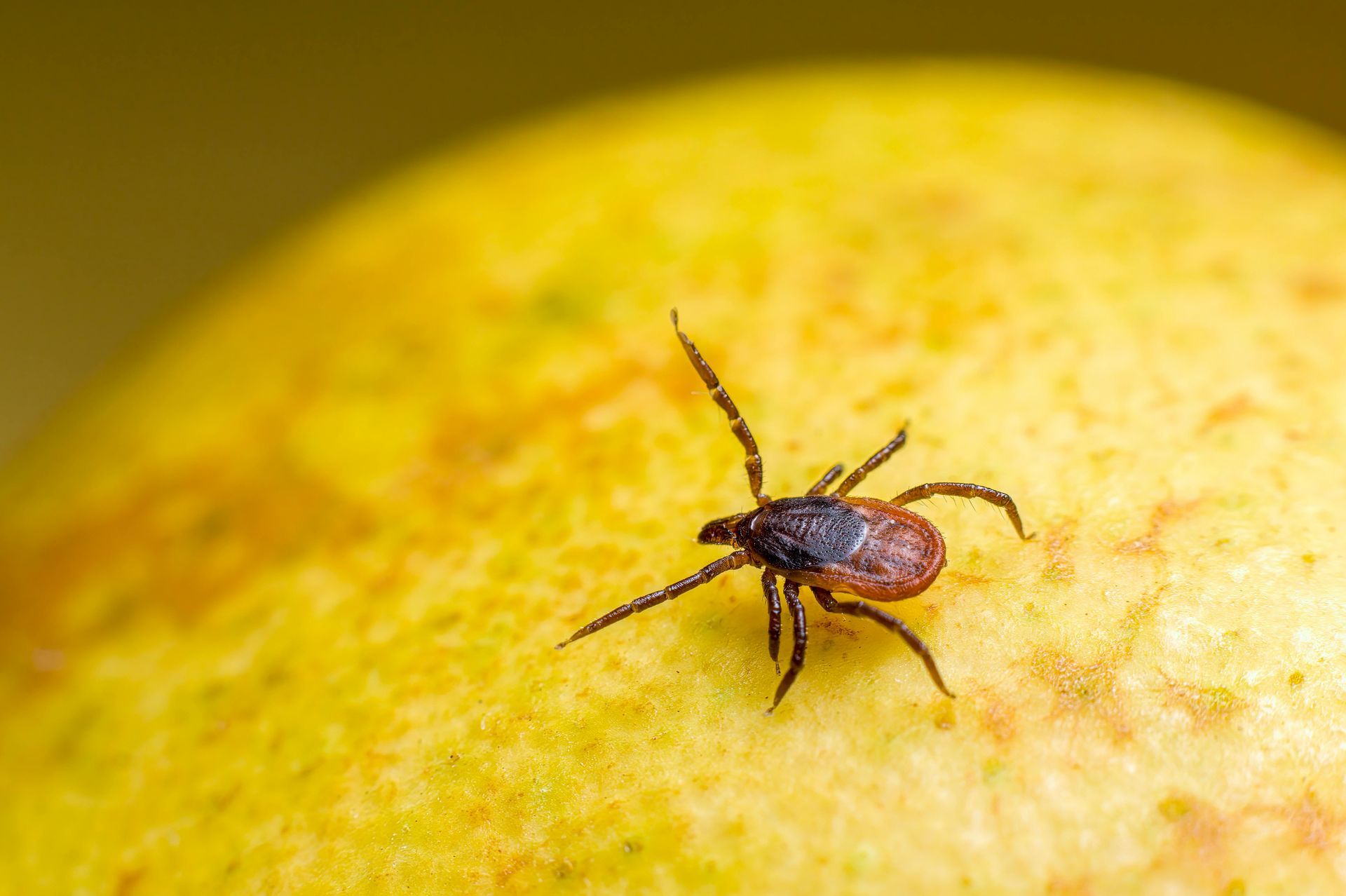Comprehensive Tick and Flea Control: Safeguard Your Home and Pets
Tick Control
Why Is Tick Control Important?
Ticks are notorious for carrying a variety of diseases that can affect both humans and pets. These include Lyme disease, Rocky Mountain spotted fever, and anaplasmosis. Once they latch onto a host, ticks can remain attached for days, feeding on blood and potentially transmitting dangerous pathogens.
How We Handle Tick Infestations
At SAPPHIRE Pest Control, we use a detailed approach to eliminate ticks from your property and prevent future problems:
- Inspection: We inspect your property for common tick hiding spots, including tall grass, shrubs, and shaded areas.
- Treatment: Our technicians apply targeted treatments to areas where ticks are likely to thrive. We focus on both adult ticks and their eggs to break their lifecycle.
- Pet Protection: While we treat your yard, it’s essential to coordinate with your veterinarian to keep your pets on tick prevention medication.
- Prevention Tips: We offer advice on maintaining a tick-free yard, such as keeping grass trimmed and reducing shaded areas where ticks thrive.
Contact Us
We will get back to you as soon as possible
Please try again later
Common Signs of a Tick Infestation
- Ticks on pets or people: After spending time outdoors, especially in grassy areas, check your pets and family members for ticks.
- Visible ticks: Ticks often attach themselves around pets’ ears, neck, and between toes.
Safe and Effective Tick Control
Our tick control solutions are safe for your family and pets once they have dried. We use methods designed to eliminate ticks without posing risks to your household.
Flea Control
Why Is Flea Control Important?
Fleas are not only irritating but also dangerous. They can transmit diseases like plague and tapeworms, and they are the leading cause of flea allergy dermatitis in pets. Once fleas invade your home, they reproduce rapidly, making early intervention crucial.
How We Handle Flea Infestations
Our team provides a thorough, multi-step process to eliminate fleas and prevent re-infestation:
- Inspection: We inspect common flea areas like pet bedding, carpet, and shaded outdoor spaces.
- Treatment: Our flea control treatments target adult fleas, eggs, and larvae, breaking the lifecycle and preventing further spread.
- Pet Protection: We recommend keeping your pets on veterinarian-prescribed flea preventatives to protect them from future infestations.
- Prevention Tips: We offer guidance on maintaining a clean home environment, such as regularly washing pet bedding and vacuuming carpet to remove flea eggs and larvae.
Common Signs of a Flea Infestation
- Excessive scratching: Pets with fleas may scratch, bite, or lick excessively.
- Flea dirt: You may notice tiny black specks, known as flea dirt, on your pet’s fur or bedding.
- Flea bites on humans: Flea bites can cause small, itchy red bumps, often around the ankles or legs.
Safe and Effective Flea Control
Our flea treatments are safe for both your family and pets once they are dry. We use professional-grade products that ensure fleas are eliminated from your home and yard.
Call Us Today at
903-456-7816 or
Ticks are responsible for transmitting more than 16 diseases to humans, including Lyme disease, Rocky Mountain spotted fever, and anaplasmosis.
- Fleas reproduce rapidly—just one flea can lay up to 50 eggs per day, and a single flea can lead to 100,000 fleas in just 30 days.
- Ticks thrive in grassy, wooded, and shaded areas, and can attach to hosts within seconds to minutes of exposure.
50%
of adult black-legged ticks (deer ticks) carry the bacteria that cause Lyme disease.
80%
of humans who are bitten by infected black-legged ticks will develop the distinctive "bull’s-eye" rash, an early sign of Lyme disease.
95%
of a flea infestation exists as eggs, larvae, and pupae in the environment, with only 5% being adult fleas on a pet.

What are the signs of a flea infestation?
Signs of a flea infestation include pets scratching excessively, finding flea dirt (small black specks) in your pet’s fur or bedding, and small red, itchy bites on humans, especially around the ankles and legs. You may also spot fleas jumping on your pets or around your home.
How do ticks get into my home?
Ticks typically enter homes by hitching a ride on pets, people, or even clothing after spending time in grassy or wooded areas. Once inside, they can attach to pets or humans and transmit diseases.
Are fleas and ticks dangerous?
Yes, fleas and ticks can be dangerous. Fleas can transmit diseases like tapeworms and plague, and they often cause allergic reactions in pets. Ticks are known to carry serious diseases such as Lyme disease, anaplasmosis, and Rocky Mountain spotted fever.
Are tick and flea treatments safe for my pets and family?
Yes, our treatments are designed to be safe for your pets and family once dry. We use targeted products that eliminate fleas and ticks while being gentle on your home and environment.
How often should I treat my yard for fleas and ticks?
It depends on the severity of the problem, but during tick and flea season (spring through fall), we recommend treating your yard every 4-6 weeks to keep these pests at bay. Ongoing treatments throughout the year are important, especially in warmer climates.

